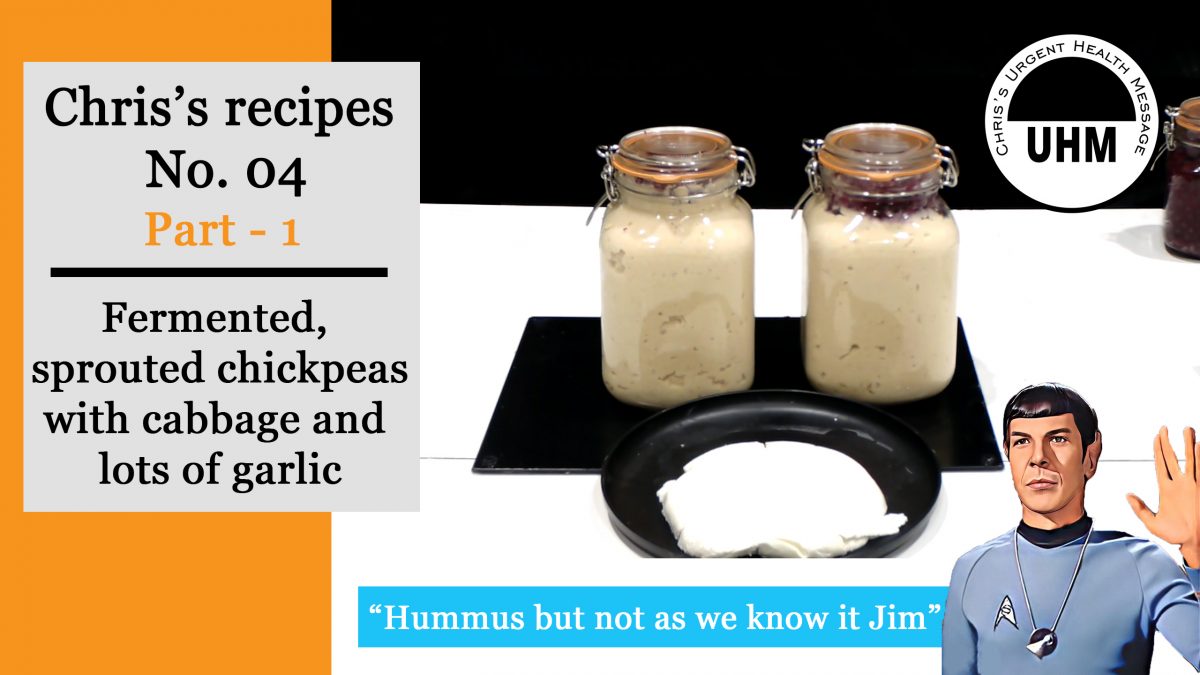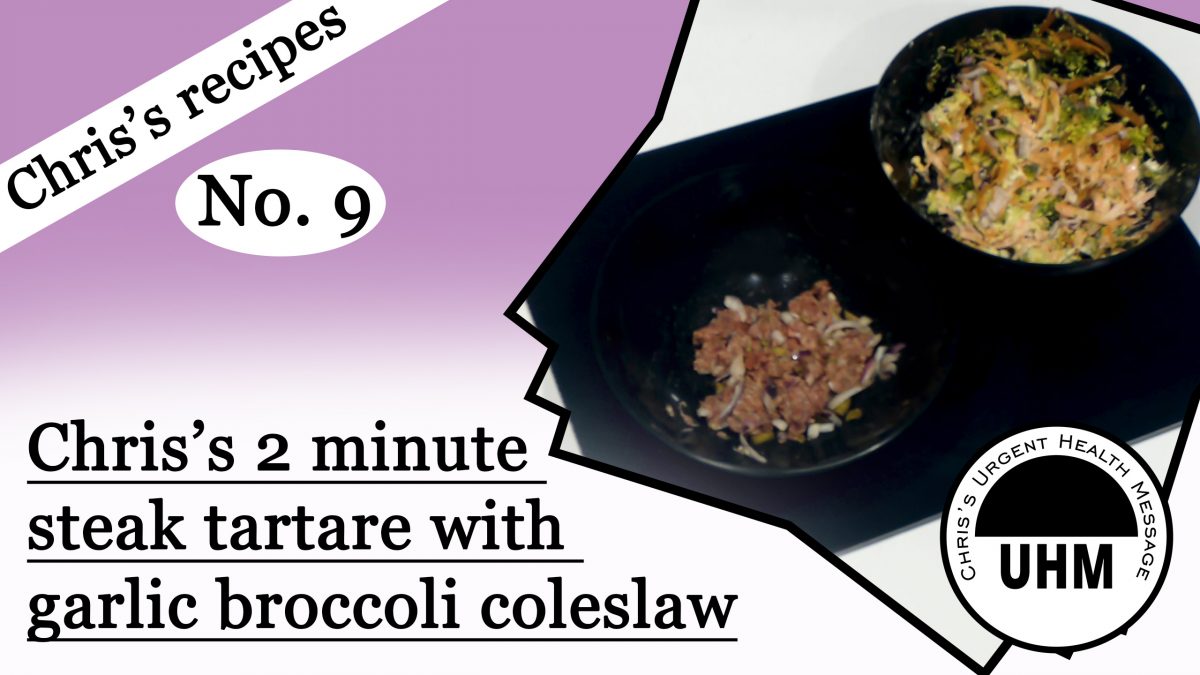Here I make Hummus from sprouted, fermented chickpeas with a ton of garlic and white cabbage using a magimix food processor. (You can use any kind of food processor. I love my magimix).
Some notes on the garlic:
*The garlic will become mellow during the fermenation process. The longer you leave the chickpeas and garlic to ferment, the mellower it will become. You will need to experiment a little to see how much garlic to put in and how long to leave it to ferment to taste. In the video I used a ton of garlic. It was still strong after 2 months. So you might want to use less, or a lot less or even none at all. Sprouted, fermented chickpeas without garlic will do just fine for our hummus recipe.
*Some people have a genetic fault. The enzyme which breaks down cysteine, cysteine dioxygenase (CDO) is deficient. These people have a sulphur intolerance and can’t eat foods like cabbage and garlic without an allergic reaction. You will generally be aware of your sulphur intolerance if you have one. Both garlic and the cabbage in our fermented recipe are sulphur foods. So if you are sulphur intolerant you could leave these out of the recipe. The cabbage is added to make the chickpeas ferment more effectively but you could just use a lot more whey (see the video) and leave out the garlic and the cabbage. If you have CDO deficiency I recommend taking Altrient brand lipospheric glutathione.
So first we have to make our stock of ferment and store it in Kilner jars. In part 2. (Next blog article and recipe video), I put some in my high speed blender, the vitamix with some sprouted sunflower seeds, juice of one lemon and a splash of olive oil.
Why go to all this trouble? Why not just open a can of chickpeas? Well anything that has been canned has been cooked to the nth degree to preserve it and make sure it does not give you botulism. Cooking food, particularly at high heat or for lengthy periods damages the proteins and our digestive enzymes don’t recognise them and can’t process them. So they end up putrefying in our intestines snd damaging the cells lining the intestine and making it leaky! (Seignalet)
Sprouted chick peas taste just like cooked chickpeas. Sprouting gets rid of the anti-nutrients like protease inhibitors that keep the chickpeas dormant until rain dampens the soil or in our case until we put them in a sprouting jar overnight with some water.
Sprouting turns on the starch digesting enzyme amylase, turning the starch into more digestible simple sugars. (Does cooking do this? No!). Storage proteins are broken down by proteolytic enzymes into more digestible simple aminos and peptides. What’s more there is an increase in aminos by a factor of 2 to 5 and they tend to be the essential aminos that our body can easily use. (Does cooking do this? No!) Fats are converted into simple sugars. (Can cooking do this? No!). Trace minerals and vitamins are increased. (Can cooking do this? No!)
Sprouted Grains: A Comprehensive Review. Benincasa et al 2019
In the video I show you how to ferment the sprouted chickpeas and garlic with cabbage and whey. Sauerkraut is traditionally made with just cabbage and salt but I follow Sally Fallon’s recommendation to make whey from yoghurt with active culture so that you need to use much less salt.
The fermentation process in addition to making the food easily storable for long periods without refrigeration, makes the nutrients even more bioavailable. The longer you store it the better tasting and more nutritious it becomes!
But don’t take my word for it – look up some studies. Here is one:
…microorganisms contributing to the fermentation process have recently been associated with many health benefits, and so these microorganisms have become another focus of attention. Lactic acid bacteria (LAB) have been some of the most studied microorganisms. During fermentation, these bacteria synthesize vitamins and minerals, produce biologically active peptides with enzymes such as proteinase and peptidase, and remove some non-nutrients. Compounds known as biologically active peptides, which are produced by the bacteria responsible for fermentation, are also well known for their health benefits.
Among these peptides, conjugated linoleic acids (CLA) have a blood pressure lowering effect, exopolysaccharides exhibit prebiotic properties, bacteriocins show anti-microbial effects, sphingolipids have anti-carcinogenic and anti-microbial properties, and bioactive peptides exhibit anti-oxidant, anti-microbial, opioid antagonist, anti-allergenic, and blood pressure lowering effects. As a result, fermented foods provide many health benefits such as anti-oxidant, anti-microbial, anti-fungal, anti-inflammatory, anti-diabetic and anti-atherosclerotic activity. …..
Health benefits of fermented foods Sanlier et al 2017
I consider this one of my star recipes. I have to admit that I was stuck in a rut in terms of cooking before I decided to make a different recipe video every day. I recall the words of the head of the ski school at Grenoble University 45 years ago: “On apprend beaucoup en enseignant”. (You learn a lot by teaching.)
Now I have the proof of concept I’m going to make a year’s supply of the ferment. It will take me a couple of hours to do that but then I have a store of the main ingredient and I just have to sprout some sunflower seeds in order to be able to make super delicious, super nutritions hummus at the drop of a hat in about 5 minutes. I recommend that you do the same. Make a small batch though to make sure that you are happy with the results first before you turn your kitchen into a ferment hummus factory.


